APUSH: Period 5 (1844-1877)
1/43
There's no tags or description
Looks like no tags are added yet.
Name | Mastery | Learn | Test | Matching | Spaced |
|---|
No study sessions yet.
44 Terms
Westward Migration
Year: 1840s-1870s
Summary: Americans moved west for land, gold, and new opportunities, driven by Manifest Destiny.
Significance: Increased conflict with Native Americans and Mexico; intensified debates over slavery's expansion.
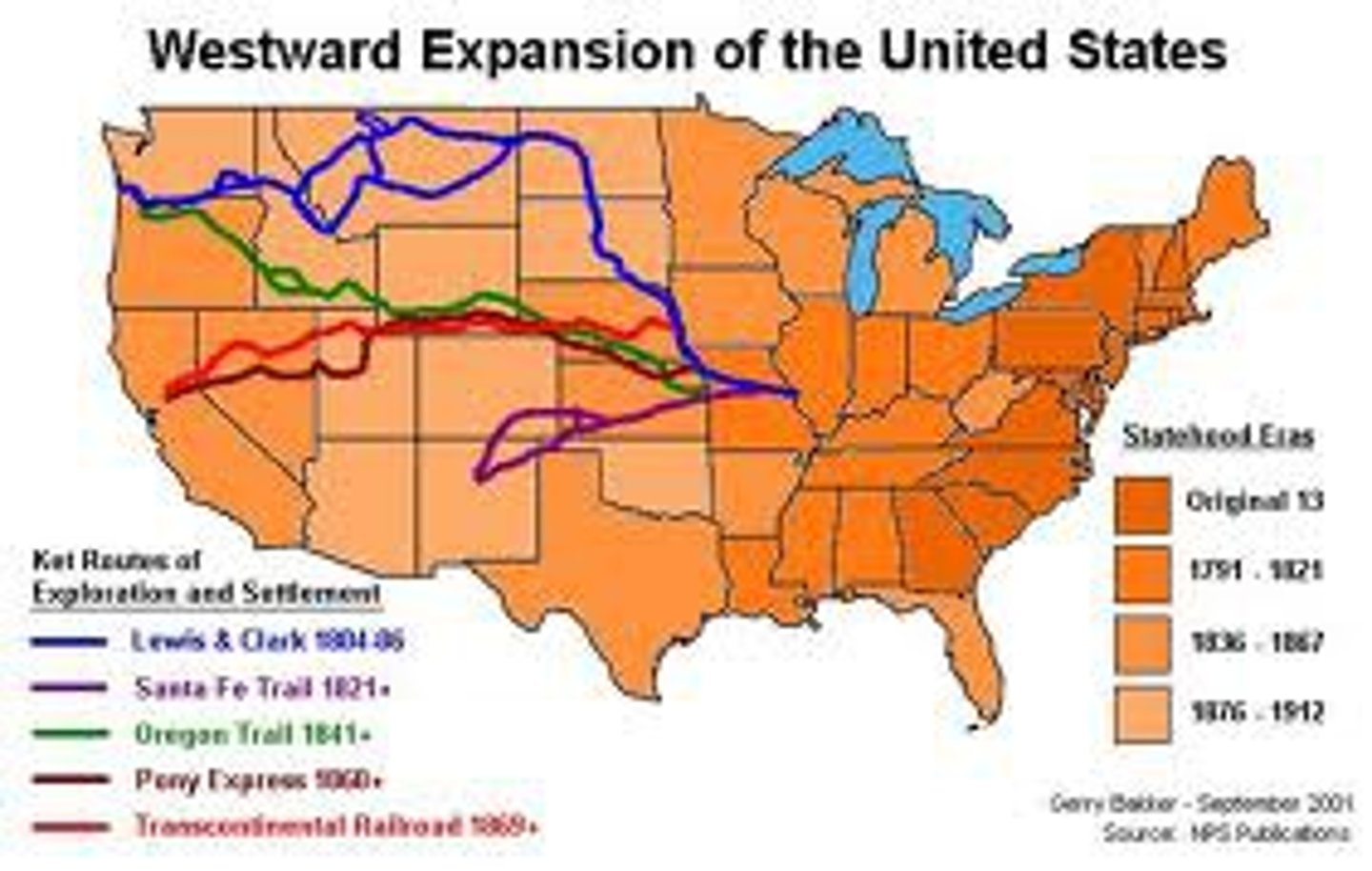
Manifest Destiny
Year: 1840s
Summary: Belief that the U.S. was destined to expand across the continent.
Significance: Justified westward expansion and contributed to the Mexican-American War and Native displacement.

James K. Polk's Presidency (1845-1849)
Year: 1845-1849 (presidency)
Summary: Expansionist president who led the U.S. during the Mexican-American War and oversaw the Oregon and Texas annexations.
Significance: Helped fulfill Manifest Destiny but deepened sectional tensions over new territories.
Texas Annexation
Year: 1845
Summary: U.S. annexed Texas after it declared independence from Mexico in 1836.
Significance: Angered Mexico and helped trigger the Mexican-American War.
Mexican-American War
Year: 1846-1848
Summary: Conflict over U.S. annexation of Texas and boundary disputes; ended with the Treaty of Guadalupe Hidalgo.
Significance: Added vast new territory (Mexican Cession), reigniting debates over slavery in the West.
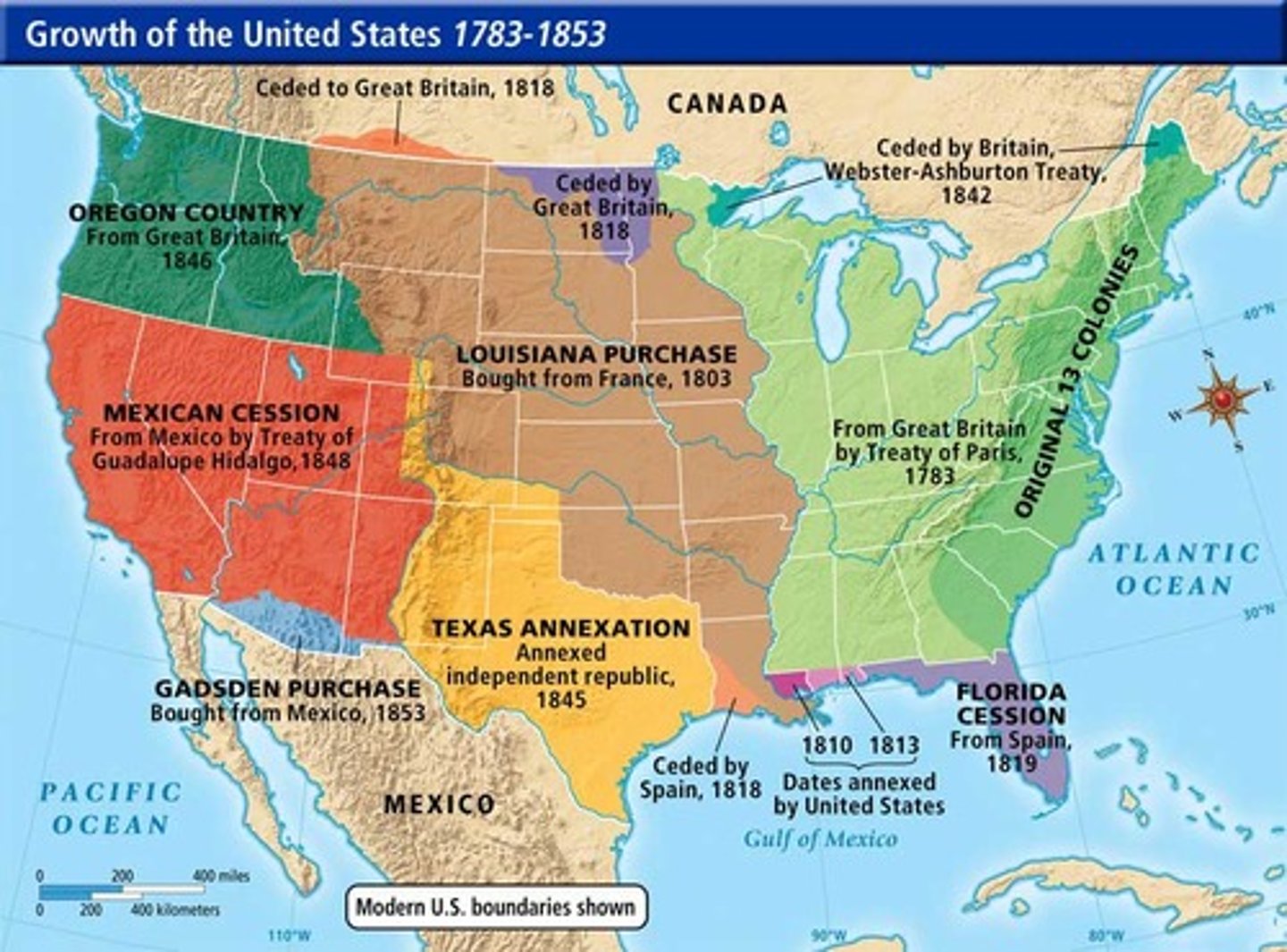
Mexican Cession
Year: 1848
Summary: Land (including CA, NV, UT, AZ, NM) gained from Mexico after the war. Significance: Reignited the debate over slavery's expansion and contributed to sectionalism.
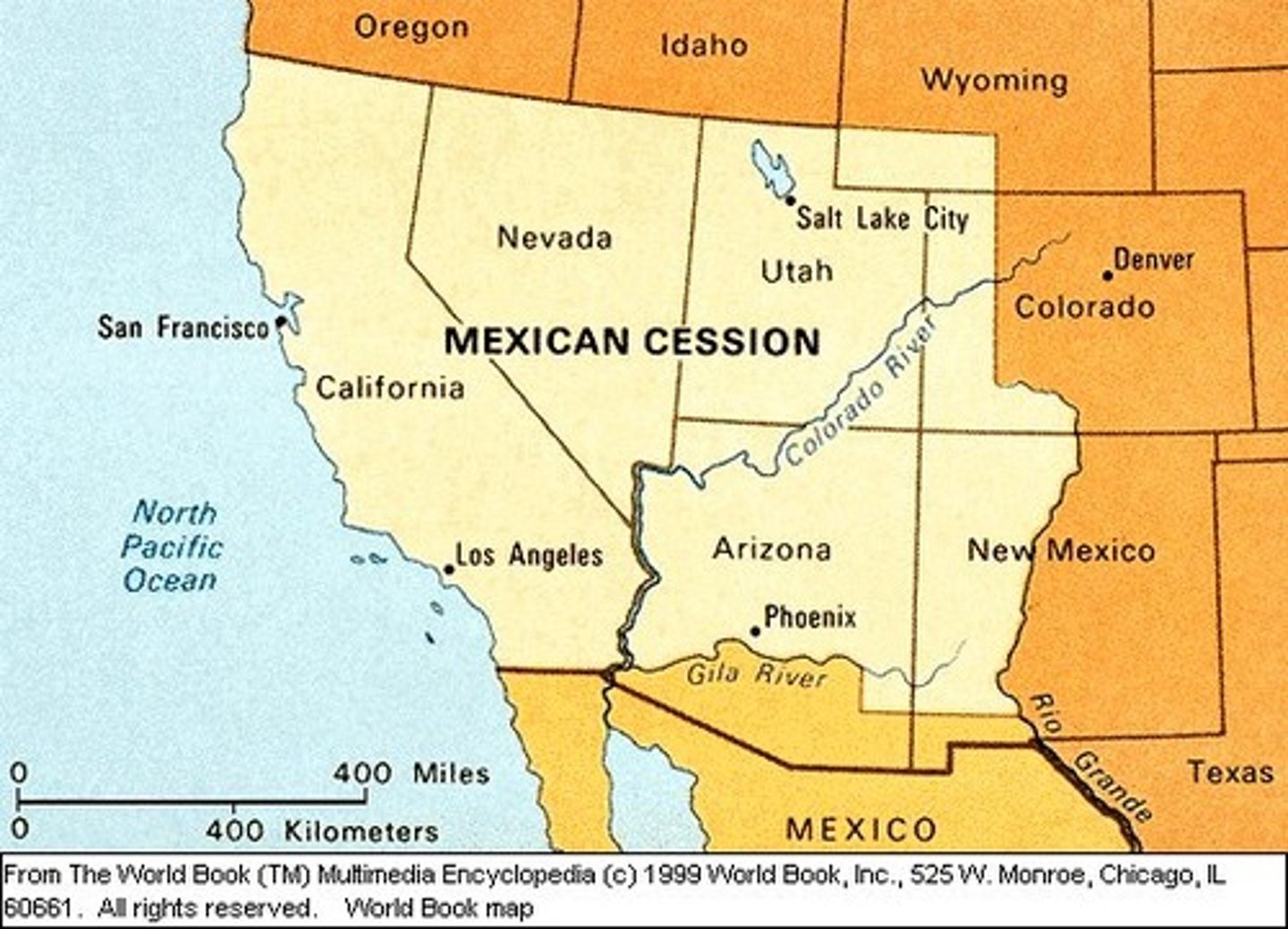
Wilmot Proviso
Year: 1846
Summary: Proposed amendment to ban slavery in any territory gained from the Mexican-American War.
Significance: Though it failed, it intensified sectional conflict and revealed deep divisions over slavery's expansion.
Gadsden Purchase
Year: 1853
Summary: U.S. bought land from Mexico (southern Arizona and New Mexico) for $10 million to build a transcontinental railroad.
Significance: Marked the final territorial acquisition in the continental U.S. and highlighted sectional competition over slavery and infrastructure routes.
American Indian Removal
Year: Continued through 1840s-1870s
Summary: Native tribes were forcibly removed or confined to reservations as settlers expanded west.
Significance: Led to violence and dispossession; destroyed Native ways of life across the Plains and West.
Homestead Act
Year: 1862
Summary: Gave 160 acres of free land to settlers willing to live on and improve it for five years.
Significance: Encouraged westward expansion and development of the American frontier but led to displacement of Native Americans.
Pacific Railway Act
Year: 1862
Summary: Authorized construction of the transcontinental railroad, providing government support and land grants to railroad companies.
Significance: Connected the East and West, boosted trade and migration, and intensified settlement of the West.
Irish and German Immigration
Year: 1840s-1850s
Summary: Millions came due to famine (Irish) and political unrest (German). Irish settled in cities and German in the Midwest. Also called old immigrants
Significance: Transformed cities, fueled labor, and provoked nativist backlash.
Anti-Catholic Nativist Movement
Year: 1840s-1850s
Summary: Native-born Protestants opposed Catholic immigrants (esp. Irish).
Significance: Led to the rise of the Know-Nothing Party and growing anti-immigrant sentiment.
Ideological and Economic Differences Over Slavery
Year: 1840s-1860s
Summary: The North industrialized and opposed slavery's expansion; the South remained agricultural and slave-dependent.
Significance: Created deep sectional divides that led to the Civil War.
California Gold Rush
Year: 1849
Summary: Discovery of gold drew hundreds of thousands to California.
Significance: Rapid population growth led to CA statehood and increased pressure on Native land.

Compromise of 1850
Year: 1850
Summary: Admitted CA as a free state, allowed popular sovereignty in new territories, and passed a stricter Fugitive Slave Act.
Significance: Temporarily eased tensions but inflamed Northern resistance to slavery.
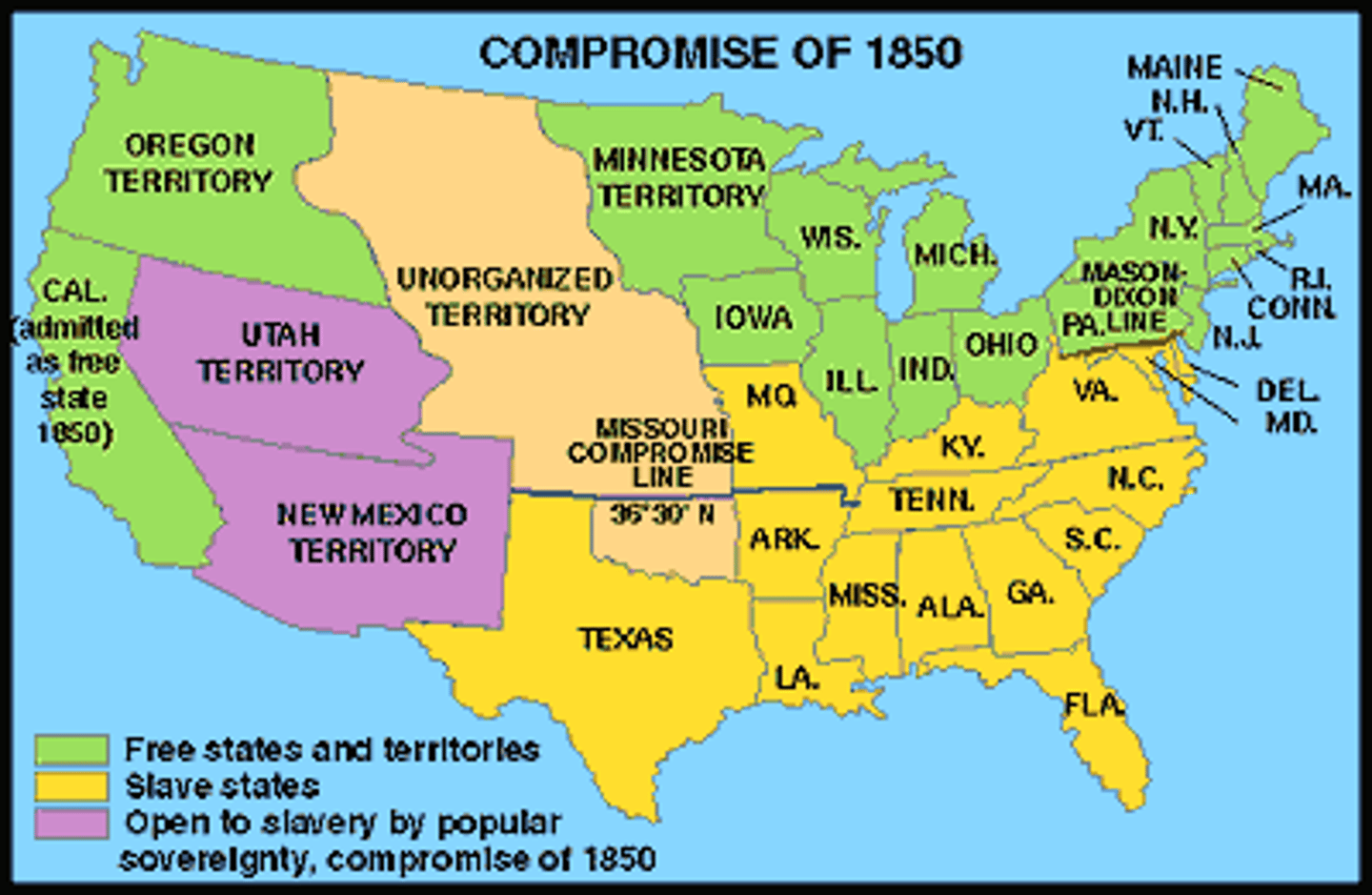
Fugitive Slave Act
Year: 1850
Summary: Required return of runaway slaves; Northern states passed laws to resist it.
Significance: Increased Northern support for abolition and heightened sectional conflict.
Kansas-Nebraska Act
Year: 1854
Summary: Allowed popular sovereignty in Kansas and Nebraska, repealing the Missouri Compromise.
Significance: Led to "Bleeding Kansas", rise of the Republican Party, and outrage in the north.

Bleeding Kansas
Year: 1854-1856
Summary: Violent clashes in Kansas between pro- and anti-slavery settlers after the Kansas-Nebraska Act.
Significance: Exposed the failure of popular sovereignty and symbolized the breakdown of political compromise.
Sumner-Brooks Incident
Year: 1856
Summary: Congressman Preston Brooks violently beat Senator Charles Sumner after an anti-slavery speech. Significance:
Highlighted increasing political violence and deepened North-South animosity.
Free-Soil Movement
Year: 1848-1850s
Summary: Opposed the expansion of slavery into western territories.
Significance: Helped form the Republican Party and shifted political focus to slavery expansion. Lincoln used movement as part of campaign.
Abolitionists
Year: 1830s-1860s
Summary: Activists like William Lloyd Garrison, Fredrick Douglas, and Sojourner Truth called for the immediate end of slavery.
Significance: Built pressure that made slavery a national moral and political issue.
Frederick Douglass
Year: 1840s-1870s
Summary: Former enslaved man, abolitionist, writer, and speaker.
Significance: His powerful writings and speeches humanized the enslaved and inspired the abolitionist cause.
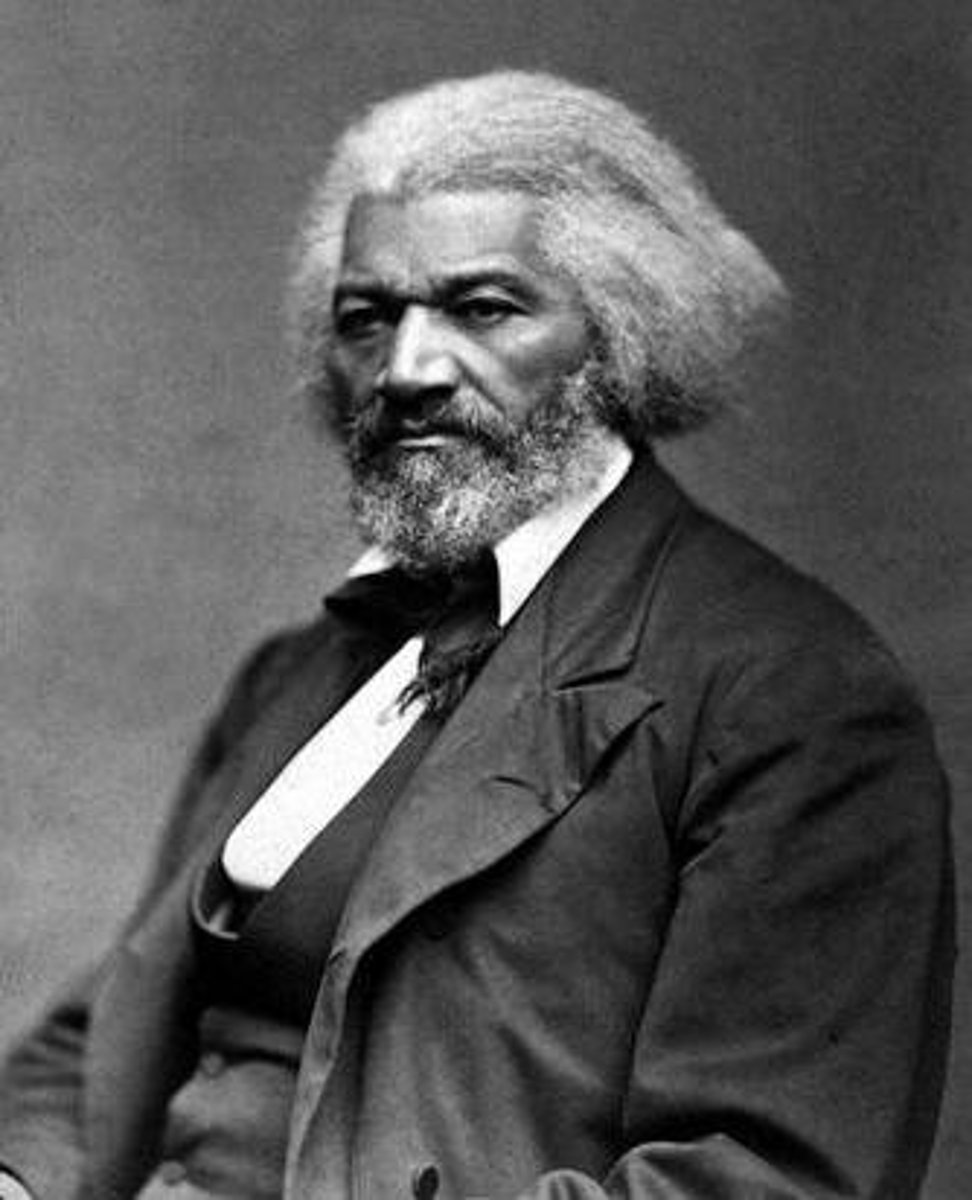
William Lloyd Garrison
Year: 1831-1870s (active years)
Summary: Radical abolitionist and founder of the newspaper The Liberator, which called for the immediate end of slavery.
Significance: One of the most influential voices in the abolitionist movement; helped inspire Northern anti-slavery sentiment and moral arguments against slavery.
Harriet Beecher Stowe
Year: 1852 (Uncle Tom's Cabin)
Summary: Her novel exposed the cruelty of slavery to Northern readers. Wrote uncle tomes cabin
Significance: Widened anti-slavery sentiment and angered the South.

John Brown
Year: 1859 (Harpers Ferry Raid)
Summary: Radical abolitionist who led a failed raid to spark a slave rebellion.
Significance: Became a martyr in the North and a terrorist in the South, deepening sectional divisions.

Slavery Argument: Positive Good
Year: 1830s-1860s
Summary: Southern leaders claimed slavery was a positive good and biblically justified.
Significance: Intensified ideological battles over slavery and set the South on a collision course with the North.
Emergence of the Republican Party
Year: 1854
Summary: Formed in opposition to the Kansas-Nebraska Act and slavery's expansion.
Significance: Became the main anti-slavery party and Lincoln's party by 1860.
Sectional Parties; Sectionalism
Year: 1850s
Summary: Political parties began aligning with regional interests rather than national unity.
Significance: Destroyed the Second Party System and contributed to the collapse of the Union.
Election of 1860
Year: 1860
Summary: Lincoln won without any Southern electoral votes.
Significance: Triggered the secession of Southern states and the start of the Civil War.
Abraham Lincoln (1861-1865)
Year: 1860-1865
Summary: 16th president who preserved the Union and issued the Emancipation Proclamation.
Significance: His leadership redefined the purpose of the war and led to the end of slavery.
Secession
Year: 1860-1861
Summary: Eleven Southern states left the Union after Lincoln's election.
Significance: Direct cause of the Civil War; led to the formation of the Confederacy.
Civil War - Key Events
Ft. Sumter (1861): First shots of the war.
Anaconda Plan: Union strategy to blockade and split the South.
Vicksburg (1863): Gave Union control of Mississippi River.
Gettysburg (1863): Major Union victory; turning point of the war.
Sherman's March to the Sea (1864): Total war campaign across Georgia.
Appomattox Courthouse (1865): Lee surrendered to Grant, ending the war.
Significance: Preserved the Union, ended slavery, and changed the balance of federal power.
Emancipation Proclamation
Year: 1863
Summary: Freed slaves in Confederate states and reframed the war as a fight against slavery.
Significance: Gained moral support at home and abroad; prevented foreign intervention on the Confederacy's behalf.
Gettysburg Address
Year: 1863
Summary: Lincoln's speech honoring fallen soldiers and redefining the war as a struggle for equality and democracy.
Significance: Became a foundational statement of American ideals and unity.
13th Amendment
Year: 1865
Summary: Abolished slavery and involuntary servitude, except as punishment for a crime.
Significance: Legally ended slavery in the United States, fulfilling a key goal of the Civil War.
14th Amendment
Year: 1868
Summary: Granted citizenship to all people born or naturalized in the U.S., including formerly enslaved people, and guaranteed equal protection under the law.
Significance: Became the foundation for future civil rights legislation and court decisions
15th Amendment
Year: 1870
Summary: Prohibited denying a citizen the right to vote based on race, color, or previous condition of servitude.
Significance: Gave Black men the legal right to vote, though Southern states would later find ways to suppress this right. Partially led to increase in Black men in government.
Reconstruction - Presidential and Radical
Year: 1865-1877
Summary: Presidential Reconstruction (Lenient); Radical Reconstruction (stricter, military oversight of the South).
Significance: Tried to rebuild the South and integrate freedmen; led to major resistance and backlash.
Sharecropping System
Year: 1865-1877
Summary: Freedmen and poor whites farmed land for a share of the crop; often led to debt.
Significance: Replaced slavery with a new system of economic dependency and exploitation.
South Resisting ReConstruction
Year: 1865-1877
Summary: Southern leaders used Black Codes, violence, and voter suppression to undermine Reconstruction.
Significance: Limited Black freedom and political power despite new constitutional rights
New South
Year: Post-1865
Summary: Idea of a modern, industrialized South after the Civil War.
Significance: Economic change was limited; most of the South remained agricultural and racially segregated.
Freedmen's Bureau
Year: 1865-1872
Summary: Government agency that helped former slaves with education, housing, and jobs. Integration into society.
Significance: Short-lived but critical in early Reconstruction efforts; met with Southern resistance. Had most impact in education.
Compromise of 1877
Summary: Hayes became president in exchange for ending Reconstruction by withdrawing federal troops from the South.
Significance: Marked the end of federal efforts to protect Black rights; began the Jim Crow era.